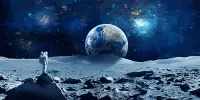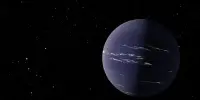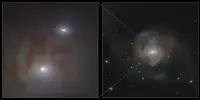India became the fourth country to land on the Moon in August, and the first to do so near the lunar south pole. Since landing, the lander and rover have completed experiments to measure the temperature at the landing site and study the composition of the lunar soil before shutting down for the lunar night, possibly for good.
For the first time in human history, the mission was a resounding success, finding water ice, movement beneath the surface, and measuring the temperature at the lunar south pole. Did they, or didn’t they?
Ouyang Ziyuan, known as the “Father of China’s Moon Program,” informed the Chinese-language journal Science Times that India’s Chandrayaan-3 Vikram Lander is at 69 degrees south latitude, far from the lunar south pole. While that line of latitude would lie within the Antarctic Circle on Earth, he pointed out that on the moon, the south pole begins between 88.5 and 90 degrees latitude, before bragging about China’s space program.
Since the launch of Chang’e-2 in 2010, China’s space program “has been capable of sending orbiters and landers directly into earth-moon transfer orbit, a maneuver that India has yet to deliver given the limited capacity of its launch vehicles,” he told Science Times, according to Time. “The engine that China used is also far more advanced.”
While he may be correct in claiming that India did not officially land on the lunar south pole, this is not something that the Indian Space Research Organisation (ISRO) has declared. The lander landed about 600 kilometers (373 miles) from the Moon’s south pole and was photographed by NASA’s Lunar Reconnaissance Orbiter.
ISRO has always stated unequivocally that they landed closer to the South Pole than any other nation, if not at the South Pole itself. Even if it wasn’t at the South Pole, it’s an impressive achievement and a mission that’s already telling us about the intriguing chemical makeup of lunar soil.
















